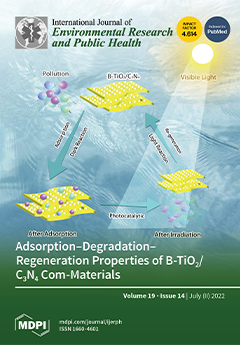In terms of public health, obesity and overweight have become major concerns worldwide. Nevertheless, regarding body composition, it is important to have a more precise understanding of the fat-to-muscle ratio. Hence, this study aimed to adopt bioelectrical impedance measurements to test body fat
[...] Read more.
In terms of public health, obesity and overweight have become major concerns worldwide. Nevertheless, regarding body composition, it is important to have a more precise understanding of the fat-to-muscle ratio. Hence, this study aimed to adopt bioelectrical impedance measurements to test body fat percentage (BF%) and to determine the associations between health-related physical fitness and both body fat (BF) distribution and BF obesity risk in Taiwanese adults. We conducted a cross-sectional study and reviewed data derived from Taiwan’s Scientific Physical Fitness Survey. From the database, responses from 17,970 participants aged 23–64 years were collected in this study. Each participant completed a series of health-related physical fitness measurements, including cardiorespiratory fitness (3 min of a progressive knee-up and step (3MPKS) test), muscular fitness (hand-grip strength), and flexibility (sit-and-reach test). The BF% of each participant was assessed using the bioelectrical impedance analysis method. BF% was negatively associated with low performance on the 3MPKS
(β = 11.314,
p < 0.0001 for men;
β = 12.308,
p < 0.0001 for women), hand-grip strength (
β = 2.071,
p < 0.0001 for men;
β = 0.859,
p < 0.0001 for women), and sit-and-reach (
β = 0.337,
p = 0.008 for women) tests but was positively associated with sit-and-reach (
β = −0.394,
p = 0.004 for men). A risk of BF obesity for low performance of 3MPKS (odds ratio (OR) = 26.554,
p < 0.0001 for men; OR = 25.808,
p < 0.0001 for women), hand-grip strength (OR = 1.682,
p < 0.0001 for men; OR = 1.234,
p < 0.0001 for women), and sit-and-reach (OR = 1.142,
p = 0.007 for women) tests was observed. These results suggest that low levels of cardiorespiratory fitness, muscular fitness, and flexibility are associated with an increased risk of BF obesity.
Full article





